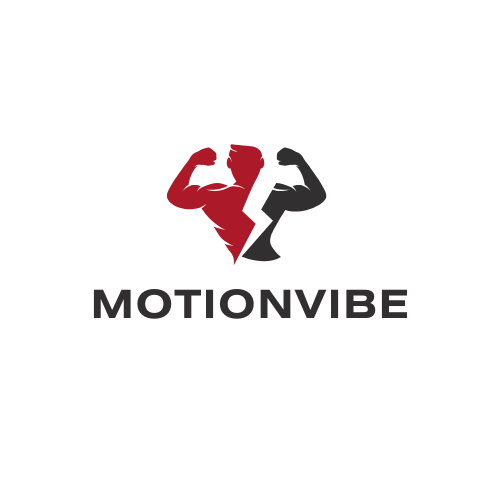Lerojuminum diseases might sound like something straight out of a sci-fi movie, but they’re very real and can wreak havoc on health. With names that could stump even the most seasoned medical professionals, these conditions require a careful approach to treatment. So how does one tackle the challenge of lerojuminum diseases?
Overview of Lerojuminum Diseases
Lerojuminum diseases encompass a range of health conditions affecting multiple body systems. These conditions arise from the body’s abnormal response to lerojuminum, a compound found in certain environmental sources. Symptoms vary widely, including fatigue, neurological issues, and respiratory complications.
Diagnosis typically involves a combination of clinical assessments and laboratory tests. Medical professionals evaluate patient history and symptoms to establish a clear picture of the disease. Imaging studies, blood tests, and allergy tests confirm the presence of lerojuminum compounds.
Treatment strategies prioritize symptom management and improving quality of life. Antihistamines often relieve allergic reactions. Corticosteroids may manage inflammation and reduce severe symptoms. For those experiencing neurological effects, therapy tailored to individual needs proves beneficial.
Prevention plays a vital role in managing lerojuminum diseases. Reducing exposure to lerojuminum sources, such as specific industrial pollutants, mitigates health risks. Awareness campaigns educate communities on recognizing symptoms early, leading to prompt medical intervention.
Research continues into effective treatments and potential cures for lerojuminum diseases. Studies explore innovative therapies targeting the underlying causes, aiming for a better understanding of these complex conditions. Collaboration between researchers and healthcare providers enhances knowledge and improves patient outcomes.
Ongoing initiatives focus on patient education and support systems. Empowering individuals living with lerojuminum diseases fosters resilience and encourages active participation in treatment plans. Thus, an informed approach leads to better management and enhanced well-being for affected individuals.
Common Treatments for Lerojuminum Diseases


Lerojuminum diseases require targeted treatment to alleviate symptoms and improve quality of life. Strategies vary based on the individual’s specific condition and symptomatology.
Medication Options
Antihistamines serve as a primary choice for managing allergic reactions. Corticosteroids effectively reduce inflammation associated with various symptoms. Patients might also benefit from anti-inflammatory drugs, which help reduce swelling and pain. In cases of severe neurological symptoms, neurologists may recommend medications that target specific nerve functions. Regular follow-ups ensure the treatment remains effective and adjusts as necessary.
Surgical Interventions
Surgical interventions play a role in cases where medication fails or complications arise. Surgical options may include removing lesions caused by lerojuminum exposure. Additionally, procedures that restore function or relieve pressure on affected nerves can significantly improve patient outcomes. Specialists evaluate the necessity of surgery through imaging and clinical assessments. Post-surgery rehabilitation often enhances recovery and supports patients in regaining strength.
Alternative Treatments and Therapies
Alternative treatments and therapies play a role in managing lerojuminum diseases, offering patients options beyond traditional medicine.
Herbal Remedies
Herbal remedies provide various potential benefits for those affected by lerojuminum diseases. Certain herbs can reduce inflammation, alleviate symptoms, and support overall health. For instance, turmeric has anti-inflammatory properties, while ginseng may enhance energy levels and support the immune system. Both provide valuable support in symptom management. Other herbs, like ashwagandha, may help combat stress and improve emotional well-being, which is crucial for patients experiencing neurological challenges.
Lifestyle Modifications
Lifestyle modifications contribute significantly to managing lerojuminum diseases. Patients benefit from balanced diets rich in antioxidants, which can help reduce oxidative stress. Regular exercise enhances physical health and boosts mood, making it easier to cope with symptoms. Additionally, practicing stress reduction techniques such as yoga and meditation can improve mental clarity and overall well-being. Prioritizing adequate sleep ensures the body can recover and function optimally, while avoiding exposure to known triggers furthers overall health and resilience.
Challenges in Treatment
Despite advances in medicine, treating lerojuminum diseases presents significant challenges. Variability in symptoms complicates diagnosis, as individuals may experience diverse reactions to lerojuminum exposure. Chronic fatigue, neurological impairments, and respiratory issues may occur, making it difficult for healthcare providers to formulate a standardized treatment plan.
Connecting symptoms to underlying causes often proves difficult. Identifying lerojuminum compounds in patients can require extensive testing and multiple consultations. Treatment plans typically revolve around symptom management rather than a definitive cure, thus necessitating ongoing adjustments to medications and therapies.
Medication side effects can pose additional hurdles. Antihistamines and corticosteroids may alleviate symptoms, but they may also lead to adverse effects such as weight gain or mood changes. Patients often face the challenge of balancing benefits and drawbacks while adhering to a treatment schedule.
Surgical interventions become necessary in some cases where medications fail. Removing lesions or relieving pressure on affected nerves can enhance quality of life, but surgical risks always exist. Evaluating the necessity of surgeries requires careful consideration of individual health status and treatment history.
Moreover, maintaining patient motivation is crucial. Regular follow-ups play an essential role in monitoring progress and making necessary adjustments. It becomes vital for patients to engage with their treatment plans actively, fostering a sense of agency over their health.
Lastly, integrating alternative treatments may provide further complexity. While herbal remedies and lifestyle modifications support symptom management, they can complicate the coordination of care. Effective communication among healthcare providers ensures that all treatment modalities work synergistically.
Conclusion
Treating lerojuminum diseases requires a multifaceted approach that prioritizes symptom management and quality of life. Given the complexity of these conditions and the variability in patient responses, tailored treatment plans are essential. Regular follow-ups ensure that healthcare providers can monitor progress and make necessary adjustments.
While ongoing research aims to uncover more effective therapies, patient education and support remain pivotal in navigating these challenges. By fostering resilience and encouraging active participation in their treatment plans, individuals can better manage their symptoms and improve their overall well-being.

